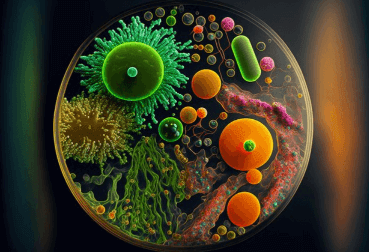Question
a.
loss in surface area of the active component.
b.
agglomeration of metal particles caused by thermal sintering of the solid surface.
c.
covering of the catalytic active sites by a foregin substance.
d.
all (a), (b) and (c).
Posted under Basic Chemical Engineering
Interact with the Community - Share Your Thoughts
Uncertain About the Answer? Seek Clarification Here.
Understand the Explanation? Include it Here.
Q. A catalyst loses its activity due to
Similar Questions
Explore Relevant Multiple Choice Questions (MCQs)
Q. 'N' plug flow reactors in series with a total volume 'V' gives the same conversion as a single plug flow reactor of volume 'V' for __________ order reactions.
View solution
Q. Specific rate constant for a second order reaction
View solution
Q. A reversible liquid phase endothermic reaction is to be carried out in a plug flow reactor. For minimum reactor volume, it should be operated such that the temperature along the length
View solution
Q. The rate constant of a chemical reaction increases by 100 times when the temperature is increased from 400 °K to 500 °K. Assuming transition state theory is valid, the value of E/R is
View solution
Q. A batch reactor is suitable for
View solution
Q. For a heterogeneous catalytic reaction
View solution
Q. Sulphuric acid is used as a catalyst in the
View solution
Q. Fractional conversion __________ with increase in pressure for ammonia synthesis reaction i.e., N₂ + 3H₂ ↔ 2NH₃.
View solution
Q. Pick out the wrong statement.
View solution
Q. The reason why a catalyst increases the rate of reaction is that, it
View solution
Q. A first order irreversible reaction, A → B is carried out separately in a constant volume as well as in a variable volume reactor for a particular period. It signifies that __________ in the two reactors.
View solution
Q. Which of the following is the most suitable for very high pressure gas phase reaction ?
View solution
Q. The reaction between oxygen and organic material is a/an __________ reaction.
View solution
Q. With decrease in temperature, the equilibrium conversion of a reversible endother-mic reaction
View solution
Q. In an exothermic chemical reaction, the reactants compared to the products have
View solution
Q. Which of the following will give maximum gas conversion ?
View solution
Q. __________ explains the mechanism of catalysis.
View solution
Q. From among the following, choose one which is not an exothermic process.
View solution
Q. The fractional volume change of the system for the isothermal gas phase reaction, A → 3B , between no conversion and complete conversion is
View solution
Q. A catalyst
View solution
Recommended Subjects
Are you eager to expand your knowledge beyond Basic Chemical Engineering? We've handpicked a range of related categories that you might find intriguing.
Click on the categories below to discover a wealth of MCQs and enrich your understanding of various subjects. Happy exploring!








